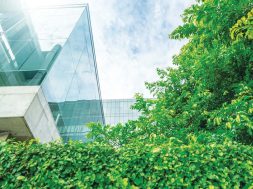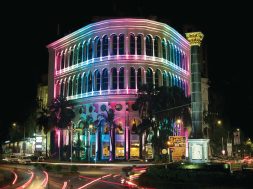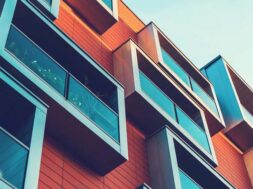Bright future for energy efficient, green buildings
“Looking at the current scenario, it is evident that energy efficient, eco-friendly buildings are going to become a necessity in today’s life,” shares Avinaash Kummar, Manager, Green Building & Energy Services, SGS India
The concept of green buildings is a holistic approach rather than just a trend that’s gaining momentum in construction sector. Buildings have a long life cycle around 40-50 years as well as consume 40 per cent of total energy. These are also major contributors to carbon emissions. Considering this, future of energy efficient, green buildings is bright. Rating agencies like IGBC and GRIHA are promoting green buildings in India. Parallelly, the Government of India is playing its role by giving due weight to the National Building Code of India (NBC) and Energy Conservation Building Code (ECBC) of India. In an interview with ACE Update, Avinaash Kummar shares the importance of green building norms.Green buildings are catching up in India, what is the current scenario of green buildings in India?From a modest beginning of 20,000 square feet of green built-up area in the country in 2003, today India has over 1.38 billion square feet of green building footprint. Till now, there are 352 certified green buildings and over 1,972 registered buildings. There are seven different rating systems by IGBC. GRIHA (Green Rating for Integrated Habitat Assessment) is also coming very fast which was originally developed by TERI and thereafter adopted as the national rating system for green buildings by the Government of India in 2007. The GRIHA rating system takes into account the provisions of the National Building Code 2005, the Energy Conservation Building Code 2007 announced by BEE and other IS codes. This was developed specifically aimed at non-air conditioned or partially air-conditioned buildings. Fundamental principle behind both the rating system of IGBC and GRIHA are same. GRIHA has also registered more than 300 projects in India and continuously growing.
Looking at the current scenario, it is evident that energy efficient, eco-friendly buildings are going to become a necessity in today’s life. By 2022, IGBC aims to have a footprint of 5 billion square feet of green new construction.
Which state has more number of green buildings in India?All the metro cities are doing quite good in terms of green buildings. Tamil Nadu, Maharashtra, and Delhi-NCR has taken good lead, but states like Gujarat, Andhra Pradesh, Rajasthan, and Kerala are also coming quite rapidly.
Is Indian government also adopting green buildings practices for their offices?It is mandatory for all new buildings of the government and PSUs to comply with the requirement of at least 3-Star rating under the Green Rating for Integrated Habitat Assessment (GRIHA). The Ministry of New and Renewable Energy (MNRE) has endorsed GRIHA, which is mandatory for buildings of the central government and public sector undertakings. The Central Public Works Department (CPWD) has also adopted and integrated GRIHA into their standard operating procedure.
Delhi Urban Art Commission (DUAC) has recommended to the Ministry of Urban Development to increase the FAR (floor area ratio) of green buildings in Delhi and for permission to be granted for the use of the roofs of buildings for solar photovoltaic installation.
Surat Municipal Corporation (SMC) and Surat Urban Development Authority (SUDA) have prepared an action plan for approval by the Government of India to incentivise developers and adopt green building codes in the construction of green buildings and green townships in Surat.
Pimpri-Chinchwad Municipal Corporation (PCMC) has approved a resolution to promote the construction of GRIHA-rated green buildings on plots, which have an area of less than 2,500 square metres. The buildings will receive concessions in the general tax, which is a component of the property tax, if they are GRIHA rated. One- to Five-Star rated buildings will receive between 5-15 per cent concessions in general tax — the higher the rating, the higher the concession. These initiatives are expected to enhance the growth of green buildings not only in large cities, but also in smaller municipalities across India. What are the technological advancements happening for the sector?Green building technology can really help achieve sustainable development by reducing energy consumption to a large extent and improving the return on investment by reducing maintenance. Considering the economic benefits of smart technologies, one must include factors like health cost, future economic stability, quality of life and costs of operation. For example, the transition from incandescent light bulbs to compact fluorescent light bulbs can lead to energy savings of up to 75 per cent of costs. The small increase in initial costs to purchase the bulbs would easily be recouped many times over by the savings and extended life of the new bulbs.
Many buildings are using features like control light system, a glass technology that produces uniform lighting throughout the year. A 30 mm translucent polycarbonate panel is installed in between which has intelligent light controllers. These louvers have an opaque reflective surface. Hybrid fibre optics uniformly distributes sunlight through a single point source.
Advancements are going on continuously and recent advances in green building technologies are bringing carbon-neutral and zero net-energy homes closer to reality. The building sector is on the front lines of the sustainability movement – meaning that innovations within the industry stand to make a substantial impact on climate change and the environment. How are the government regulations for the same?To further provide an impetus to the green buildings movement, the ministry has launched a host of financial incentives on registration fees, awards and incentives. The environment ministry recently said that green buildings would be given priority in the environmental impact assessment process. This is a welcome step that would not only reduce the time taken for such clearance, but also add value by quantifying environmental benefits that are measurable and can be monitored. To encourage green buildings, the Noida Authority has decided to reward about two dozen developers who have opted for eco-friendly construction by giving them 5 per cent FAR for free. In the last six months, layout plans of around 20 buildings, which have been designed completely on the green concept, have been approved by the authority.
How different are Indian policies compared to western countries?Indian policies are prepared keeping Indian climatic and geographic conditions in mind. Indian policies are giving due weight to the National Building Code (NBC) of India, Energy Conservation Building Code (ECBC) of India etc. The ECBC 2007 is one of the pioneer acts among all the green building policies in India.
ECBC 2007 – Energy Conservation Act 2001 provides for the establishment of state energy conservation agencies to plan and execute programs. The Act led to the formation of Bureau of Energy Efficiency (BEE) that formulated the ECBC. It targets building energy efficiency and was introduced in 2007. This is the nation’s first building energy code and aims to have a major impact on energy efficiency in buildings. It is a voluntary code for all buildings with a connected load of 500 kW and most likely to become a mandatory code. It covers minimum requirements for building envelope performance as well as for mechanical systems and equipment, including heating, ventilation and air-conditioning (HVAC) system, interior and exterior lighting system, service hot water, electrical power and motors in order to achieve energy efficiency in different climatic zones of India.
The Ministry of Environment and Forests (MoEF) and Environmental Impact Assessment (EIA) and clearance are mandatory requirements for all buildings with a built-up area above 20,000 square metres and such projects have to be apprised by the MoEF’s Environmental Appraisal Committees (EACs) and the State Environmental Appraisal Committees (SEACs).
The MNRE has initiated several programs focusing on the utilisation of renewable energy sources in buildings.
Sustainable Habitat Mission under the National Action Plan on Climate Change was launched by Prime Minister Manmohan Singh in 2008. It encompasses a broad and extensive range of measures, and focuses on eight missions, which will be pursued as key components of the strategy for sustainable development. These include missions on solar energy, enhanced energy efficiency, sustainable habitat, conserving water, sustaining the Himalayan ecosystem, creating a “Green India,” sustainable agriculture and establishing a strategic knowledge platform for climate change. For the habitat mission, the strategies proposed aim at promoting efficiency in residential and commercial sector through various measures such as change in building bye laws, capacity building, research and development in new technologies, education and awareness, management of municipal solid wastes and promotion of urban public transport.
As far as west is concerned, there are multiple environmental assessment tools available to the government and building developers in the United States, including the International Code Council’s International Green Construction Code; Energy Star for buildings, a joint program of the Department of Energy and the Environmental Protection Agency; the National Association of Home Builders’ (NAHB) Green program.
Brief us your services for green buildings.SGS provides comprehensive green building services in India. We help our clients from scratch to LEED/IGBC/GRIHA certification. Range of services includes energy simulation; complete green facilitation cum documentation with respect to rating system like LEED, GRIHA and IGBC; state-of-the-art third-party commissioning by Certified Measurement and Verification Professional (CMVP) by AEEE; renewable energy services for solar and wind, and ESCO services.
Cookie Consent
We use cookies to personalize your experience. By continuing to visit this website you agree to our Terms & Conditions, Privacy Policy and Cookie Policy.









